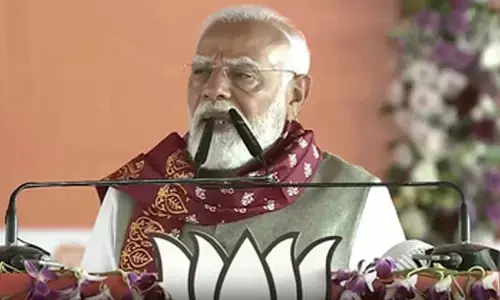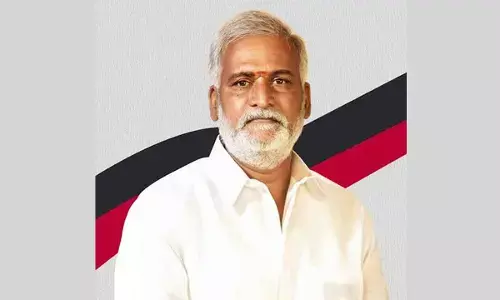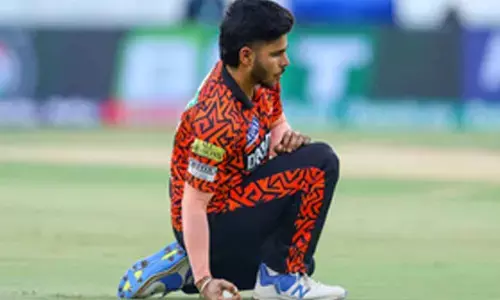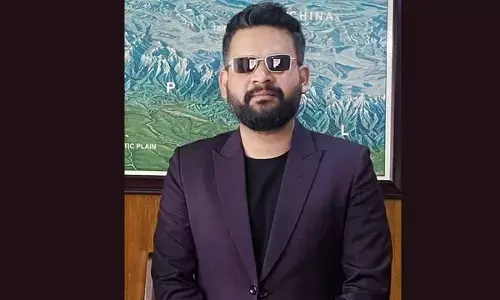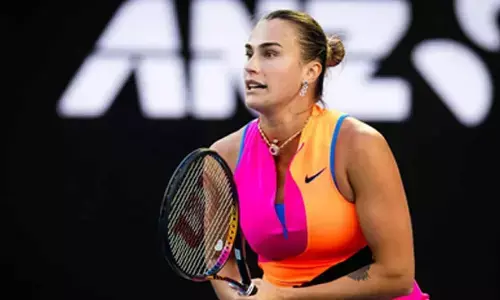Federal Front: An implausible sketch
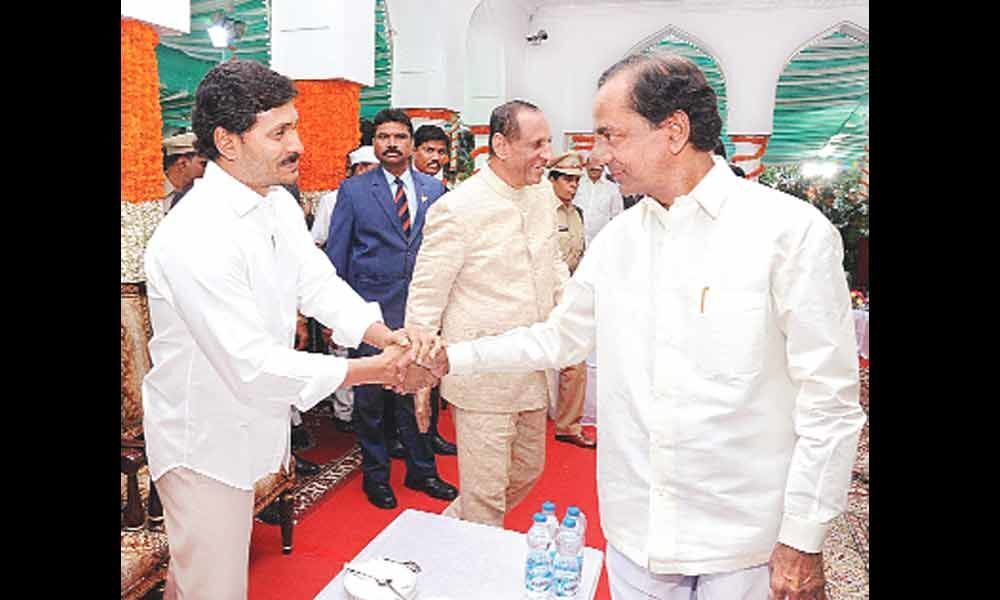
Yes, the nation is all set to witness the biggest festival of all times and myriad political parties – both national and regional - are pulling out all the stops to win the hearts of people and to translate them to votes in their efforts to come to power.
Yes, the nation is all set to witness the biggest festival of all times and myriad political parties – both national and regional - are pulling out all the stops to win the hearts of people and to translate them to votes in their efforts to come to power.
Though, ironically, crucial issues that plague the common people are conveniently kept aside and leaders -big and small – are indulged in mudslinging and character assassinations, money, muscle, castes and religions are going to decide the winners, thanks to the emerging divisive politics in the largest democracy in the world.
It is pertinent to poke around the agenda of various political parties at a time when the nation is getting ready to elect its new government for another five years. The ruling party, the Bharatiya Janata Party (BJP), ostensibly wants Prime Minister Narendra Modi to occupy the highest office for a second term to pursue its unfinished agenda.
For some other parties, it is time to oust the BJP-led National Democratic Alliance (NDA) from power and to bring back the Congress-led Mahagathbandhan (read United Progressive Alliance) to power to save our democracy. At the same time, some other regional parties want both NDA-and UPA-free India.
These regional players are hoping to rule the Centre to ensure development (or so they claim) and justice to their respective regions and usher in a new India.
"The NDA government has betrayed the nation and failed on all fronts, misused all institutions and constitutional bodies. We are coming together to protect the nation," says Chandrababu Naidu, national president of the Telugu Desam Party (TDP) and Chief Minister of Andhra Pradesh, who has allied with the Congress and other parties to end the BJP rule.
Lashing out at the injustice done to the States so far by the two national parties, Telangana Chief Minister and the founder president of Telangana Rashtra Samithi (TRS), who is leaving no stone unturned to form a Federal Front with other regional parties, has repeatedly said that
"We need a Congress, BJP-mukt Bharat, and a new India where regional parties would act as the driving force to effect a total change in the way the country is governed. We need reforms in all sectors and devolution of more powers to the States. The Centre should do its job and States should do theirs."
Unlike 2014, the regional parties have geared up in the run-up to the Lok Sabha elections and engaged in the formation of the next government at the Centre with pre-poll or post-poll alliances.
With the BJP claiming of retaining power and counter-claims of the Congress of regaining power, it is a 'wait and watch' situation now to see if actually the 2019 general elections will take a 'U-turn' from 2014 with the regional parties poised to play a greater role this time around.
When we look at the political developments in various States in India, we see that southern and eastern States have their own regional players who dominate both the Assembly and Lok Sabha polls.
The TRS has a strong base in Telangana and can win 16 seats and in Hyderabad, its ally AIMIM is beyond any doubt will emerge winner. Similarly, the 25 parliamentary seats in Andhra Pradesh are likely to be shared by two strong regional partners — the TDP and the YSRCP. The AAP in Delhi is also likely to get at least 3 seats out of 7 constituencies.
Furthermore, the BJD may also sweep 21 constituencies in Odisha. Even Mamata Banerjee-led Trinamool Congress in West Bengal can grab most of the 42 parliamentary seats. In the current scenario, in Uttar Pradesh also, the SP and BSP alliance is likely to grab seats as the declining image of the Yogi Adityanath government is going to pay them rich dividends.
In Jammu and Kashmir, the BJP withdrew its support to People's Democratic Party-led government and so in the coming general elections, the votes will be divided between JKPDF and the National Conference in Kashmir region and the BJP and the Congress in Jammu region.
The States where BJP is in direct contest with the Congress are Gujarat (25 Lok Sabha seats), Chhattisgarh (11), Madhya Pradesh (29), Rajasthan (25), Gujarat (26), Himachal Pradesh (4) and Uttarakhand (5 seats). The number adds up to 100. In all other States, the BJP and the Congress have to fight with regional parties of align with some of them.
If we take a look at the coalition governments in various States like Goa and Karnataka, the hiccups that are involved in the functioning of the government, the byzantine activity of Cabinet berth distribution among the allies and the grey areas in passing legislations are widely visible.
Furthermore, the after-effects of the withdrawal by alliance partners are also likely to cause huge drawback to the dispensation. The stability of a coalition government depends on the genuineness on the part of regional parties about ending the bi-party dominance.
If at all the regional parties form the government sans the two national political titans, then it will be the first instance of its kind and a historic event if it is able to function for the full 5-year term.
But, going by the numbers, we see that it would be a big task to achieve the majority to outnumber the UPA and NDA tally of Lok Sabha seats. Even if the proposed Federal Front is formed and some regional parties come together, then also it will fall short of numbers to take on the BJP without the Congress' support.
For instance, if the regional parties, which are proposing alliances to oust the NDA government and prevent the Congress from gaining power currently, can altogether get about 150 seats, including 17 in Telangana [16 TRS+1 AIMIM), 25 in AP (15 TDP+10 YSRCP), 3 in Delhi (Aam Aadmi Party), 36 in West Bengal (36 TMC), 20 in Odisha (20 BJD), 3 in Assam (AIUDF), 40 in Uttar Pradesh (15 BSP+ 25 SP) and 6 in Kerala (Left parties). This is only 55 percent of the halfway mark — 272 in the Lok Sabha with a total of 543 members.
So, the option left for the regional parties is to cooperate and ally with the Congress and form the government to bring some change. This would again be a repeat of the history of 1990s when Deve Gowda and I K Gujral became Prime Ministers with the Congress support.
After the BJP-led coalitions NDA-1 and 2, the Congress formed UPA-1 and 2 governments with allies, followed by the BJP regime under Modi.
If a Congress-led alliance wrests power now, this would just be continuing alternate power-sharing between the two national parties at the Centre - the Congress and the BJP - with just their shifting alliances.
There is little possibility of the regional parties coming to power on their own and completely ending the bi-party system and ushering into multi-party rule at the Centre.
But this multi-party rule could be possible if the current UPA and the NDA allies cut off and partner up to form the coalition of regional parties in post-poll alliance to make a new India. A 'New India' of multi-party power sharing at the Centre.
Will the NDA-4 get the numbers with its allies, which now include Shiv Sena, JD (U), LJP, AIADMK and SAD (Punjab), to form the next government? Will the UPA-3, led by the Congress and is allies — IUML, RJD, JMM, RLSP, JD(S) and NCP — get enough seats to keep out the NDA from power?
There is a little scope for the regional parties to float their own front as they cannot perform as expected at State levels and take post poll support from both the BJP and the Congress allies. May 23 will clear the confusion.








